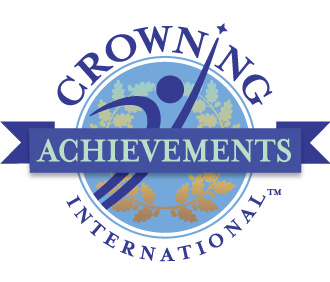
4 Ways to Engage Your Team
One of the top challenges that companies nationwide currently face is employee retention. And employee engagement is one of the essential ingredients to retaining talent. Companies regardless of industry or size are continually looking for strategies to keep their employees engaged. In this blog, we address 4 ways to engage your team to increase employee engagement.
1. Provide Ongoing Education
Educate employees on the impact their jobs have on their departments and the overall company’s bottom line. The purpose is to ensure they understand the value of their contribution.
Educate them on the company’s industry and what’s going on in the country and globally. Employees can become more engaged when they understand their industry better.
Provide education on topics beyond their jobs such as nutrition, health, and fitness. Conduct culture training to ensure everyone buys into the company’s culture. Share the company’s core values in everyday communication so employees memorize them. They will also feel they are part of the same team regardless of what area they work in.
Part of the education comes from internal communications. Ideally, the senior leadership communicates with the staff proactively. There are certain subjects, projects, or trade secrets that cannot be shared with the entire company. However, there are many other topics that can be shared. Examples include general company news, employee benefits changes, organizational changes, new product launches and confidentiality. Ensure to clarify what information should not be shared outside the company and why.
The organizational chart is sometimes kept only in Human Resources. But employees in all areas need to understand where their departments fit within the entire organizational structure. The bigger the organization the more difficult it is to see the big picture unless someone explains it to employees. The Org Chart should be continually updated and shared via the Intranet so anyone can view it at any time.
Education also includes the clarification of roles for everyone with clear accountabilities and boundaries. Besides having updated job descriptions, employees need to be clear on their roles as well as other teammates’ roles in the organization.
2. Create a Leadership Development Program
Larger organizations may have established leadership development programs. Selected, “high potential,” employees get to participate as part of their career paths. They are chosen as the emerging leaders. Smaller organizations with fewer resources can implement informal programs. Or simply budget to send their high potential employees to external leadership programs. These programs should focus on pure leadership development. This includes learning how to lead a team of individuals with different backgrounds and opinions. Learning how to think critically and strategically to make executive decisions should also be taught. Lastly, train them how to work with a senior leadership team and even with the Board of Directors.
Educate managers and first-time supervisors on basic supervisory and managerial skills. Notice this is different from developing their leadership talent and ability. This includes basic labor laws, interviewing skills, how to run a meeting, what to look for when screening resumes, authorizing PTO and vacations, when to promote employees, conducting performance reviews, and other basic managerial functions.
Continue to develop your experienced leaders too. They have different needs from the emerging and new leaders based on where they are in their careers. It is easy to assume that experienced leaders are done learning. However, it is imperative that companies invest in their experienced leaders, so they continue to grow. For example, often managers who have been in leadership positions for years still don’t know how to delegate successfully. Others don’t know how to coach their staff or handle conflict resolution tactfully.
Successful leaders want to be empowered and have autonomy in their jobs. They need to work independently and be trusted to make decisions that are within their realm of authority.
3. Provide the right tools and meaningful goals
Provide employees and their managers with the tools to do their jobs. It is discouraging to employees to be asked to do a task without the right tools to accomplish it. The tool can be a variety of things such as a software solution, one more employee, additional funds, or training.
Leaders also need to participate in the goal setting process. Setting meaningful goals that they can accomplish and make customers happy is critical to their success and thus engagement in the company. Unachievable goals are discouraging for the entire team. When “corporate” sets the goals with a top-down approach, employees don’t buy in because they didn’t have the opportunity to provide their input.
Once employees and teams meet their goals, a well-established Employee Reward Program is the next step. Rewarding employees for their accomplishments is crucial to keep them engaged. Additionally, employees who are top contributors to the company’s success should be rewarded regardless of the company’s overall success.
4. Allow a Flexible Working Environment
The term of work/life balance is now being reversed to “life/work” balance. Taking care of life comes first. Work is now perceived as secondary and for many, only necessary to pay the bills. Full-time working parents of young children have the biggest need for flexibility during working hours to handle family issues. Many employees are also taking care of elderly parents and that requires flexibility as well. When companies allow flexibility then employees (ideally) can then be fully present while at work.
Establish a “fun committee” and “innovation committee.” A Fun Committee with the purpose of planning fun events and team building activities unites the team. It can also bring joy to the workplace—even in a virtual office environment. An Innovation Committee brings a lot of new ideas and increase efficiencies across the organization. These are great opportunities for employees to share their opinions and ideas. When senior leadership implements some of these ideas, employees will be more engaged.
I hope these 4 ways to engage your team to increase employee engagement inspire you to implement them in your organization. Even though engagement starts at the top, for employees to become engaged, they need to feel empowered, trusted, heard, and valued. Having employee engagement is the result of a variety of activities, core values, and company culture.

